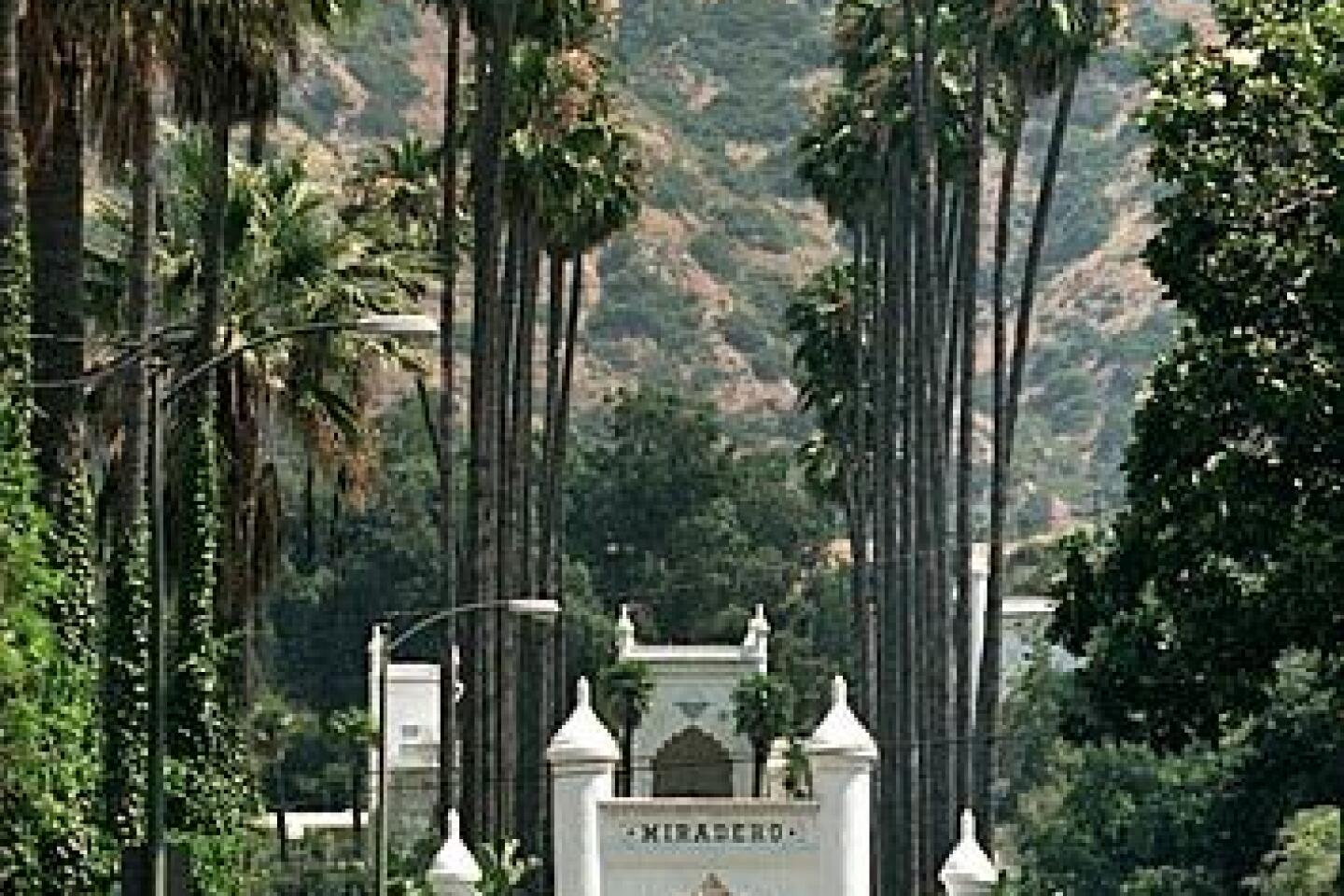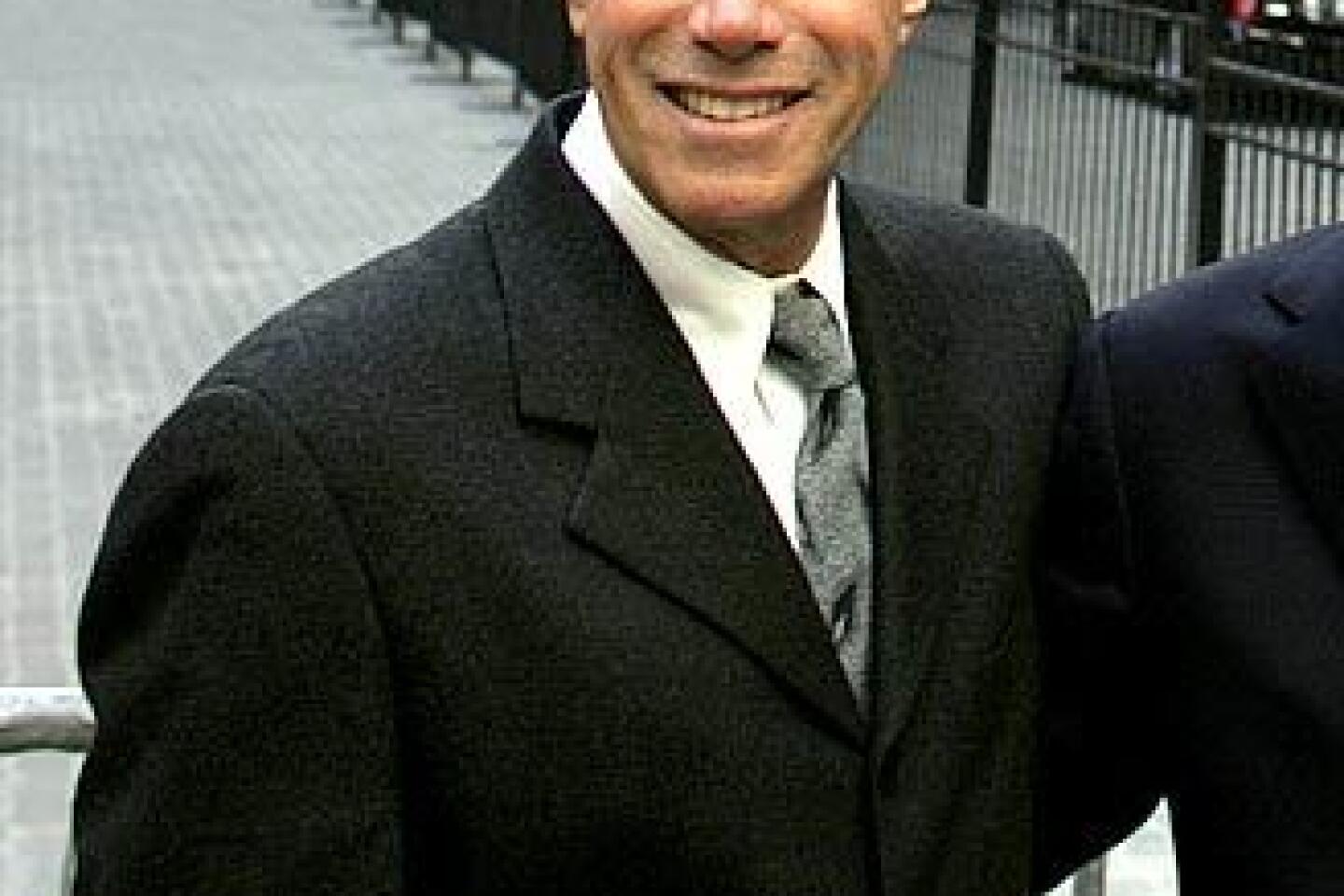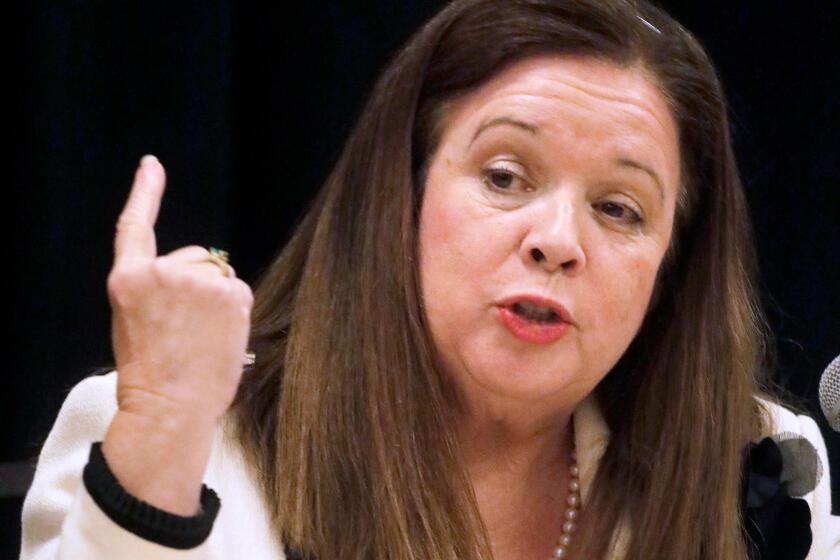The Hottest Property
- Share via
1880s
Isaac Newton Van Nuys, entrepreneur and member of the homesteading Lankershim group, has built the San Fernando Valley’s first wood-frame house, its curb appeal immediately driving up prices in an area of adobe structures.
Van Nuys’ house, which is eye-catching for not being adobe, is on a sizable lot: a 60,000-acre swath of farmland purchased for $115,000 by a consortium including wheat-farming visionary Isaac Lankershim. The home boasts views of grazing sheep and convenient access to the intersection of Ventura and Lankershim — well, eventually.
1900s
Missouri native and local developer L.C. Brand has built a summer home in the Glendale foothills. The five-bedroom home, dubbed El Miradero and built for $60,000, is on 10 acres of land and features a miniature lake with goldfish and fountains.
The Brand home boasts a pastoral setting with Basque sheepherders, orange groves and horse-drawn carriages doing 20 mph, among the highest speeds that will ever be recorded on the 101.
1902 Walter R. Wheat, vice president of the Bank of Venice, has sold a nine-room house to a local investor. The modern home, at 1400 Alvarado Terrace and part of a $15,000 land deal, is east of downtown in a neighborhood for wealthy Angelenos off Alvarado near Bonnie Brae Street.
Rumors abound that Wheat, who has become a player in the development of Palms, is abandoning downtown for the Westside, signaling an exodus that will continue for the next half a century.
1910s
L. Frank Baum, author of “The Wonderful Wizard of Oz,” has built Ozcot, a two-story frame house and magical retreat in a hamlet of citrus groves, otherwise known as Hollywood, at 1749 Cherokee Ave.
The house has a long, enclosed porch with a view of the mountains, a sunroom for Baum’s considerable green thumb and a large cage with hundreds of exotic songbirds, none of which have to compete with music being blared from passing SUVs.
1913 Famed city planner Frederick Law Olmsted Jr. has completed plans for what will become Torrance, incorporated in 1921. The city’s earliest homes are bungalows in the Craftsman and Mission traditions; the 1922 Sammons Mission Revival home features an arched entry and an arch over its driveway.
1914 Chewing-gum magnate William Wrigley Jr. has bought a 22-room estate on Orange Grove Boulevard in Pasadena for $170,000. The grand mansion, designed in 1906 by architect G. Lawrence Stimson, sits along a stretch of mansions known as Millionaires Row.
The route of the Rose Parade — started 24 years earlier by Pasadena’s moneyed Valley Hunt Club — passes by Wrigley’s front door. The parade has already become a tradition that lets the locals celebrate Southern California’s winter sunshine and encourages other folks to move west.
Some 115 years later, longtime locals pray for rain.
1914 Socialist leader Job Harriman establishes Llano del Rio Cooperative Colony, a Utopian commune in the Antelope Valley, 45 miles north of Los Angeles. The colony boasts 600 residents led by attorney Harriman, who lost mayoral elections in 1911 and 1913 and also defended the McNamara brothers, labor unionists accused of attempting to blow up the Times building.
The short-lived enclave is based on egalitarian living, i.e., dairy farming, orchard cultivation and putting out publications — until its undoing when a fault line diverts much of the water supply, and Harriman and company unsuccessfully try to get area land barons to sell access to a new supply. Later, Aldous Huxley moves in.
1920s
Los Feliz — named for Jose Feliz, soldier and co-founder of the Los Angeles pueblo — the neighborhood encompassing Griffith Park, is becoming an upscale residential haven for the likes of Cecil B. DeMille and W.C. Fields .
DeMille’s Spanish estate, purchased in 1916, combines two properties totaling roughly 12,500 square feet in the Laughlin Park area and is connected by a pergola designed by Julia Morgan. The number of physicians residing in the area also prompts a new nickname, “Pill Hill,” which in today’s terminology translates to “Plastic Surgery Place.”
1920s A nerve center in L.A.’s rich Central Avenue jazz scene, the Dunbar Hotel is home to greats Cab Calloway, Duke Ellington and Count Basie. It originally opened as the Hotel Sommerville (named after its owner, John Sommerville, who along with his wife, Vada Watson, were the first African Americans to graduate from the USC School of Dentistry). Sommerville sold it after the 1929 stock market crash, and the hotel was renamed the Dunbar in honor of poet Paul L. Dunbar.
1924 The Freeman House, Frank Lloyd Wright‘s textile-block house, has been built for $23,000 on Glencoe Way in Hollywood. It will go on to become renowned for salons hosted by its owners, with regulars Martha Graham, Xavier Cugat, Clark Gable and Richard Neutra.
1927 Businessman William Lingenbrink seeks artists for Park Moderne, his new subdivision in the hills above Calabasas. The lots start at $525, but Lingenbrink offers to trade them to artists in exchange for their work, fueling the creation of an artists colony, with cottages designed by Rudolf Schindler. The colony, felled by the stock market crash, sits on 140 acres of land, with Art Deco houses and artists’ studios amid the foothills of the Santa Monica Mountains.
1928 Mae West is apparently referring to the Ravenswood Apartments, the Rossmore Avenue Art Deco landmark, when she coos, “Why don’t you come up and see me sometime?” The building eventually houses Hedda Hopper, Judy Garland, Ava Gardner and West, whose two-bedroom unit is replete with mirrors, white furniture covered in satin or damask and white rugs.
Little-known fact: The actual line originally was: “Why don’t you come up and see me sometime, but if it’s Tuesday between noon and 3 you can’t park in front because of street cleaning.”
The line was later shortened.
1930s
Richard Neutra has completed work on a housing development in L.A.’s San Pedro area, with units going for $2,600 apiece. An architecturally significant neighborhood of wartime shipyard workers employed at L.A.’s harbor emerges.
1940s
1947 Margaret Truman, the president’s daughter, has rented a cottage in Malibu — an area of coastline from Topanga Canyon to El Segundo that is being developed as, well, a beach area.
The city’s $75-million project, which involves much relocation of sand, includes creation of a “pleasure craft harbor” known as Marina del Rey, which is immediately besieged with newly divorced men in bad toupees.
1950s
Charlton Heston has decided to rent at Park La Brea, the 176-acre campus of high-rise apartments in the Miracle Mile area between 3rd and 6th streets. Initial rents are set between $52 and $80 a month.
The development by the Metropolitan Life Insurance Co. is designed to hold 10,000 residents behind gates, including celebrities Heston and Patricia Morison, the original Kate in Broadway’s “Kiss Me, Kate.”
1958 Cheryl Crane has stabbed gangster Johnny Stompanato to death in the Beverly Hills home owned by Crane’s mother, actress Lana Turner, who is also Stompanato’s paramour. The incident at 730 N. Bedford comes 11 years after mob boss Ben “Bugsy” Siegel was gunned down in his mansion a few blocks over on Linden Drive. Local Realtors do not fear a trend.
1960s
1962 In January, Marilyn Monroe purchases a hacienda-style home at 12305 Helena Drive in Brentwood for $77,500. The 1920s house has five bedrooms, one of which is to become particularly famous just seven months later, when Monroe is found dead in it of a drug overdose.
1970s
1978 Saudi Arabian sheik Mohammed al-Fassi purchases a 38-room Sunset Boulevard mansion for $2.4 million and installs nude statuary as decoration, complete with flesh-tone genitals and pubic hair.
Shocked residents of Beverly Hills, as well as shocked citizens from all over the Southland, drive by the mansion for the express purpose of being shocked, and are shocked.
The home, originally built in 1917 by M.H. Whittier, co-founder of Beverly Hills, was gutted by fire in 1980 and was sold in 1982. Three years later, it was razed, ruining dreams for a nude statuary sculpture garden on the sprawling site.
1980s
1988 Aaron Spelling purchases a 15,000-square-foot house in Holmby Hills for $10.5 million and converts it into a slightly bigger, 56,000-square-foot house. The home includes a doll museum, a bowling alley and 54,000 other square feet of places for Spelling to look for his house keys.
2000s
2005 Hollywood mogul David Geffen — who purchased a Malibu beachfront home in the 1970s for $405,000 — finally agrees to build a walkway alongside his house, allowing the public access to the beach. The easement ends a decades-long legal battle between Geffen and the nonprofit group Access for All over who owns the right to what sand and where. In the final analysis, the agreement holds that Geffen gets to build a tremendously large Cape Cod-style house across multiple lots on Carbon Beach, while the public gets a 9-foot-wide path to a strip of sand in front of it, also regaining the ability to gape at a mogul’s crib. The dolphins have no comment.
More to Read
Sign up for Essential California
The most important California stories and recommendations in your inbox every morning.
You may occasionally receive promotional content from the Los Angeles Times.








